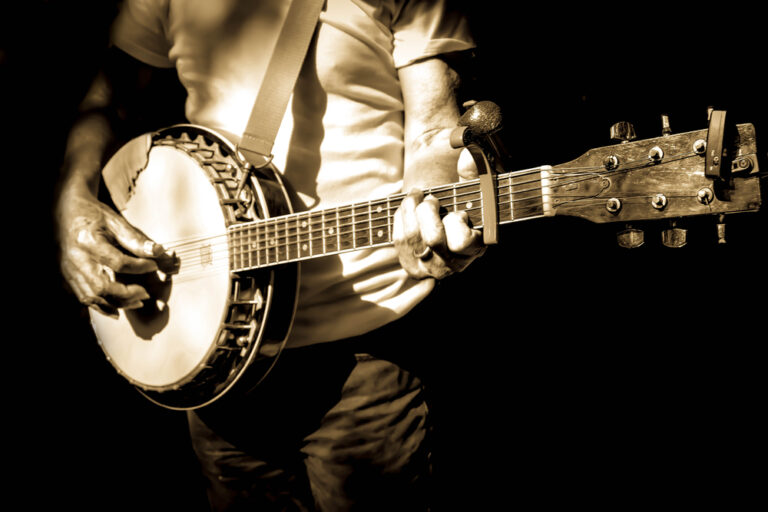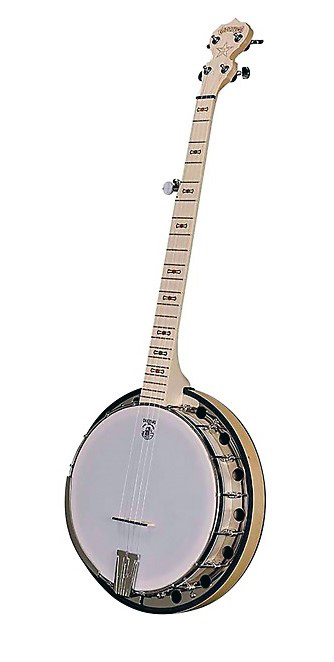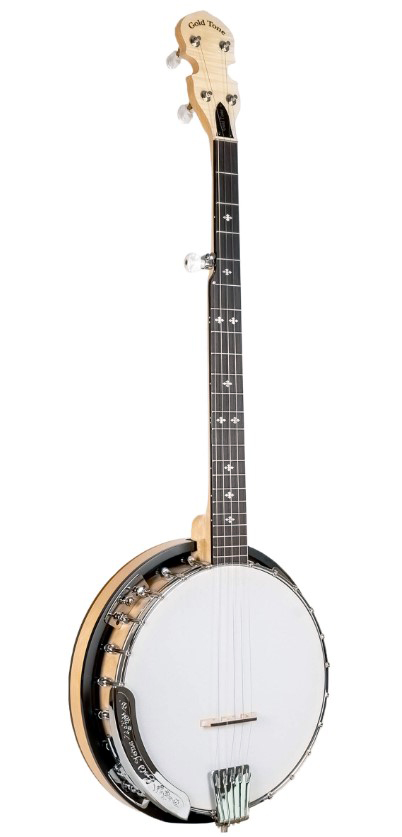Best Banjo
Overall
-
Overall: 9/10
-
Best Feature: Affordable rich, authentic banjo sound
-
TedScore™: 9/10
Best Versatile
Banjo
-
Overall: 8.5/10
-
Best Feature: Rolled Brass Tone Ring
-
TedScore™: 8.5/10
Best Budget-Friendly
Banjo
-
Overall: 8/10
-
Best Feature: High-quality construction
-
TedScore™: 8/10
Ever got a buzz from playing a finely tuned 4-string banjo? If yes, you’re in for a treat. Dive into our guide and discover the clever tricks and tips for tuning your banjo perfectly each time, ensuring it always sounds fantastic.
If you’re confused about changing the string tension or moving the bridge, don’t worry—I’ll help you.
We’ll discuss the usual CGDA tuning and other tuning options. I’ll also show you how to use tuning forks, guitar tuners, and electronic tuners.
Keep reading, and let’s make some beautiful music together!

Key Takeaways
Proper tuning
Different tunings
Regular maintenance
Understanding Banjo Tunings
When you pick up your banjo, you’re holding an instrument and a world of melodies ready to spring to life under your fingers.
The secret to unlocking these tunes? Mastery over the various banjo tunings. These adjustments of string pitches enable genres and playing styles from bluegrass to folk.

Standard Tuning and Variations
The 4-string banjo, commonly called the tenor four string banjo here, typically resonates with the standard tuning of CGDA. This tuning aligns with the viola’s tuning, making it a hit for chord-melody play.
However, if you’re playing Irish music, you might tilt towards the Irish tenor tuning, which pitches the strings to GDAE, while standard tenor tuning has them down an octave so that the tenor banjo blends seamlessly with fiddles and tin whistles.

On the other hand, the 5-string banjo, the darling of the bluegrass world, often sings in an Open G tuning—GDGBD. This setup creates a rich, resonant sound perfect for that twangy, foot-tapping goodness.
Alternative tunings come into play depending on your musical voyage. The D tuning (aDF#AD), open C (gCGCE), and double C tuning (gCGCD) offer you a palette of sonic textures to paint with.
Specialized Banjo Tunings
Strumming is foundational for generating the rhythm that characterizes banjo music.
Using a plectrum or fingerpicks, you’ll sweep the strings, shifting from downstrokes to upstrokes to create varying sounds.
The plectrum banjo, in particular, is often played with a plectrum, contributing to its distinctive sound in genres like jazz and Dixieland.
For picking, accuracy is paramount as you pluck individual strings with fingertips, fingerpicks, or a flat pick. Complex picking patterns known as rolls are the building blocks for many styles.
Rolls like the forward, backward, and alternating thumb create intricate textures and should be practiced slowly, using a metronome to maintain timing.

Chords and Melodies
Chords lay the foundation for melodies, which can be played by pressing the strings against the frets on the fretboard using your fingers.
By comfortably switching between chords, you can establish the harmonic backdrop for tunes. Work on familiarizing yourself with major, minor, and seventh-string chords, as these are frequently used in banjo music.

To play melodies, you need to understand scales and single-note sequences that are the backbone of musical composition. Incorporating techniques like slides, hammer-ons, and pull-offs will add expressiveness to your playing.
Scales and melodies are like sentences in a story—you need the right vocabulary to express the mood, feeling, or idea in your music.
Remember, staying sharp with your tuning, using proper hand position near the headstock and bridge, and developing a familiarity with the tuning pegs and tuners will set you on a path to banjo proficiency.
Keep your tuning pegs tight but not overly so. Always aim for a clear note that’s neither flat nor sharp, and let your fingers dance alongside the frets as you create your musical narrative.
Our Recommended Banjos
Deering Goodtime 2

FEATURES: - High-quality construction
- Easy to play
- Versatile sound options
- Affordable price
- Lightweight and portable
- Excellent tone production
- Limited customization options
- May require periodic tuning adjustments
When you click ‘Check Price’, you’ll see there are loads of great places to buy this item. Our personal favorite is Sweetwater for the US, and Thomann and Gear4Music for the UK & Europe.
They are the largest music retailers, with excellent customer service, competitive prices, really fast shipping, and the longest guarantees.
The professional musician who wrote this article combined many things,
from the product build, manufacturer’s reputation through to feedback
from other users, to create our famous TedScore™.
Gold Tone CC-100R

FEATURES: - Rolled Brass Tone Ring
- Maple Rim
- Remo Head
- High-quality construction and materials
- Produces a deep, rich and resonant sound
- Excellent value for the price
- Heavier weight compared to some other models
When you click ‘Check Price’, you’ll see there are loads of great places to buy this item. Our personal favorite is Sweetwater for the US, and Thomann and Gear4Music for the UK & Europe.
They are the largest music retailers, with excellent customer service, competitive prices, really fast shipping, and the longest guarantees.
The professional musician who wrote this article combined many things,
from the product build, manufacturer’s reputation through to feedback
from other users, to create our famous TedScore™.
4 String Banjo by Gear4music

FEATURES: combines affordability with a rich, authentic banjo sound
OTHER INFO: Perfect for folk, bluegrass, and country genres
- Affordable entry into the world of banjo playing
- Versatile for various genres, from folk to bluegrass
- Lightweight and comfortable for extended playing sessions
- Basic design with limited aesthetic options
When you click ‘Check Price’, you’ll see there are loads of great places to buy this item. Our personal favorite is Sweetwater for the US, and Thomann and Gear4Music for the UK & Europe.
They are the largest music retailers, with excellent customer service, competitive prices, really fast shipping, and the longest guarantees.
The professional musician who wrote this article combined many things,
from the product build, manufacturer’s reputation through to feedback
from other users, to create our famous TedScore™.
4 String Banjo Tuning
Summary
Mastering the tuning of a 4-string banjo is a delightful journey. It might seem tricky at first, but it becomes second nature with practice. The standard tuning, G-D-G-B-D, is your go-to for most tunes.
Each string’s pitch contributes to the banjo’s unique sound. Don’t worry if it takes a few tries to get it right. Patience is key here.
Think of tuning as a fun part of your practice routine. Before you know it, you’ll be able to adjust those pegs with your eyes closed. Well, almost!
Keep a tuner handy. It can be a lifesaver when you’re in a jam. Happy strumming!
Before you go…
Uncover the intriguing world of banjo strings and their significance by checking out this next article – How Many Strings. does a Banjo have?
FAQ's
The standard banjo tuning for the four strings is DGBE, similar to a guitar’s top four strings. The strings are tuned to D (fourth string), G (third string), B (second string), and E (first string). Moreover, the banjo offers a variety of alternate tunings which further enhance your exploration of the instrument.
The tuning for the Irish 4-string banjo is GDAE, which is the same as the tuning for the four string of the fiddle. The strings are tuned to G (fourth string), D (third string), A (second string), and E (first string).
Yes, you can tune a 4-string banjo in open G, which involves tuning the strings to G (fourth string), D (third string), G (second string), and B (first string). Open G string tuning, is commonly used in various musical styles and offers a distinct sound for banjo playing.
Chicago tuning on the banjo, also known as DGBE tuning, involves tuning the four strings to the same pitches as the top four strings of a guitar. The string gauges for Chicago tuning typically range from .010 to .024 inches.
The banjo ukulele combines elements of the banjo and ukulele, featuring a small, banjo-like body with a ukulele neck and tuning. In contrast, the traditional banjo has a distinct construction and tuning.











As a music teacher, I found the comprehensive explanations on banjo tunings and the highlighted chord melodies within the article exceedingly helpful for structuring my lessons. It’s challenging to find resources that so thoroughly cover both aspects. The recommendations for banjos will also be valuable for my students looking to purchase their first instrument. Thank you,
Lewis Turner, for such a detailed guide.
hey folks, is it hard to learn banjo chords? im kinda new here lol.
Interesting article, Lewis Turner! The section on specialized banjo tunings really caught my eye. I’ve always believed that exploring different tunings is a great way to discover new sounds and enhance creativity. It’s cool to see the 4-string banjo tuning getting some love too. Not many resources dive into that.
Totally agree! Experimenting with tunings is like opening new doors to music. Love how this article sheds light on that.
Really considering the Deering Goodtime 2 after reading this. Anyone knows how it compares to the Gold Tone in terms of playability for beginners? Cheers!